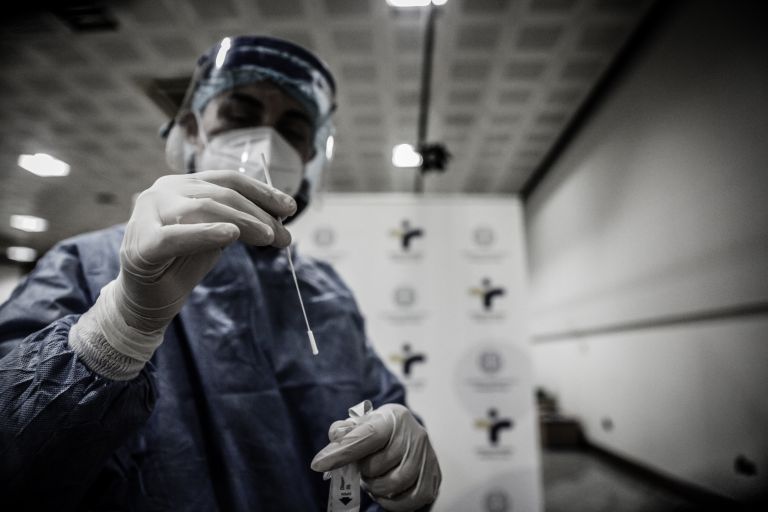The number of regions in Greece that have been characterised as high-risk “red zones” is growing according to ECDC data, even as the number of infections is rapidly approaching a record 7,000 cases daily.
The updated ECDC map released today based on epidemiological data of the past 14 days – factoring in the risk-level, the positivity rate, and the frequency of testing – shows that many regions of northern Greece (including Thessaloniki), as well as Thessaly and Thrace are in the “deep red” zone.
The rest of Greece is in the red zone, with the exception of the Aegean and Cycladic islands, which are in the intermediate orange zone.
EODY daily data
According to data released today by the National Organisation for Public Health (EODY), there have been 6,808 new infections and 42 deaths recorded in the last 24 hours.
There have been 16,151 deaths and 767,376 confirmed infections since the beginning of the pandemic.
Of the infections confirmed over the last seven days, 2,589 have been traced to prior cases and 148 are believed to be linked to travel abroad.
Intubated patients
The number of intubated patients is 441 (60 percent men), with a median age of 64-years-old, and 81 percent had an underlying medical condition and/or were age 70 or older.
Of intubated patients, 83.7 percent were unvaccinated or partially vaccinated, while only 16 percent were fully vaccinated. Since the beginning of the pandemic, 3,334 patients have been discharged from hospital ICUs.
In the past 24 hours, 363 COVID-19 patients have been admitted to hospital (a daily increase of 5.38 percent), and the average number of daily hospital admissions in the last seven days is 310 patients.
The median age of newly recorded infections is 38, while the median age of those who have died is 78-years-old.



